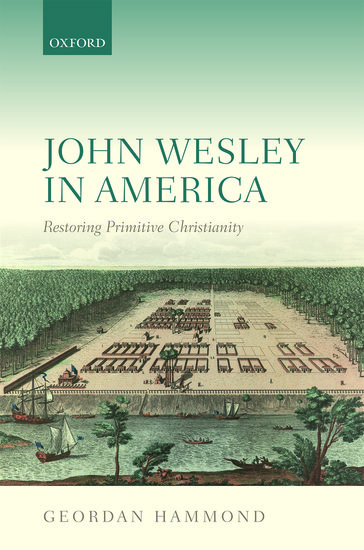By Geordan Hammond
The ideal of primitivism was common feature in eighteenth-century British society whether in architecture, art, economics, landscape gardening, literature, music, or religion. Nicholas Hawksmoor’s six London neo-classical churches are one example of the primivitist ideal in architecture and religion.
Primitivism featured prominently in the plans the Georgia Trustees in the founding of the last of the thirten American colonies in 1732. The Trustees, who governed Georgia for its first twenty years, chose the motto Non sibi sed aliis (Not for self, but for others) for their official seal. This in itself was an indication of their attraction to primitivism as the Latin phrase was derived from the closing words of St Augustine’s De Doctrina Christiana (On Christian Doctrine).
The motto also helped the Trustees to express the philanthropic intention at the heart of their establishment of Georgia. This slogan interpreted within the context of the eighteenth-century economic debates on trade and luxury, illustrates the Trustees’ appeal to a traditional classical notion of virtue. And it was in their economic ideals for the new colony that the Trustees’ appeal to primitivism can be seen most clearly.

The ideal of disinterested charity was enshrined in the colony’s charter which prevented the Trustees “and their Successors from receiving any Salary, Fee, Perquisite, or Profit whatsoever by or from this undertaking.” The Trustees’ philosophy of disinterested charity was intimately bound up with their overarching ideal of economic primitivism. Much of the promotional literature for the Georgia colony appealed to the primitivist ideal widely espoused in eighteenth-century Britain, especially by Tory opposition to the Walpole government. The opposition polemic advocated a return to a mythical age when all people worked together primarily for the good of the community rather than for their own prosperity.
The Georgia colony was designed to avoid the twin dangers of luxury and idleness through a return to primitive community based economic life. For the Trustees, this was exemplified by the proper balance between moral and economic development achieved in ancient Rome. Though in obvious conflict with the reality of life in ancient Rome, the Trustees prohibited rum, slavery, and large landholdings with the aim of restoring ancient virtue. They believed that proper social restraints needed to be in place in order to militate against vice and encourage civic responsibility. By critiquing British luxury, the Georgia colony was intended to be an example of a more pure and primitive form of community oriented economic life.
This was all undergirded by a clear religious motive. For the Trustees, economic primitivism, as a means of imitating Christ, was conceived of as an expression of their Christian faith. Their desire was for Georgia to be a religious utopia modelled on the ideal of reviving a lost age of primitive Christian virtue. Toward this aspiration they sought divine blessing on their endeavours by implementing notions of economic biblical communitarianism. They also consciously modelled the town plan of Savannah on biblical and classical patterns.
Was the Trustees’ vision achievable? Was it doomed to fail when brought into contact with the realities of a colony in an undeveloped primitive wilderness? While often sympathizing with the Trustees’ ideals, many historians of colonial Georgia have answered the latter question in the affirmative. For example, the Trustees’ determination to manage social life in Georgia combined with their distrust of the colonists’ ability to govern themselves led to weak and often ineffective social structures such as the dysfunctional court which habitually became a centre of conflict when de facto governor James Oglethorpe was absent from the colony.
The Trustees’ idealistic policies, in part, led a loose group they labelled ‘malcontents’ to advocate for the reversal of the banns on rum, slavery, and large landholdings which were central to the Trustees’ hopes of moulding Georgia into a primitive utopia. In A True and Historical Narrative of the Colony of Georgia in America (1741) discontented colonists mocked the Trustees for giving them “the opportunity of arriving at the integrity of the Primitive Times, by entailing a more than Primitive Poverty on us … As we have no Properties to feed Vain-Glory and beget Contention.” Over time the Trustees grudgingly gave up on their prohibitions of rum, slavery, and large landholdings.

While his motivation was primarily religious, and was driven by a High Church Anglican ideal, he sympathized with the Trustees’ economic primitivism. The authors of A True and Historical Narrative claimed that he “frequently declared, that he never desired to see Georgia a Rich, but a Religious Colony.” Ironically, however, in the minds of some Trustees, Wesley became a ‘malcontent’ who undermined their authority by becoming an advocate for poor colonists whom he believed were being oppressed by the magistrates and court in Savannah.
The early years of colonial Georgia provide a fascinating case study to observe attempts to apply the eighteenth-century British cultural phenomenon of primitivism in a primitive environment.
Geordan Hammond is Senior Lecturer in Church History and Wesley Studies at the Nazarene Theological College, Manchester, UK. He is the author of John Wesley in America: Restoring Primitive Christianity. He is co-organizer of the June 2014 ‘George Whitefield at 300’ conference. He serves as co-editor of the journal Wesley and Methodist Studies.
Subscribe to the OUPblog via email or RSS.
Subscribe to only religion articles on the OUPblog via email or RSS.




Recent Comments
There are currently no comments.